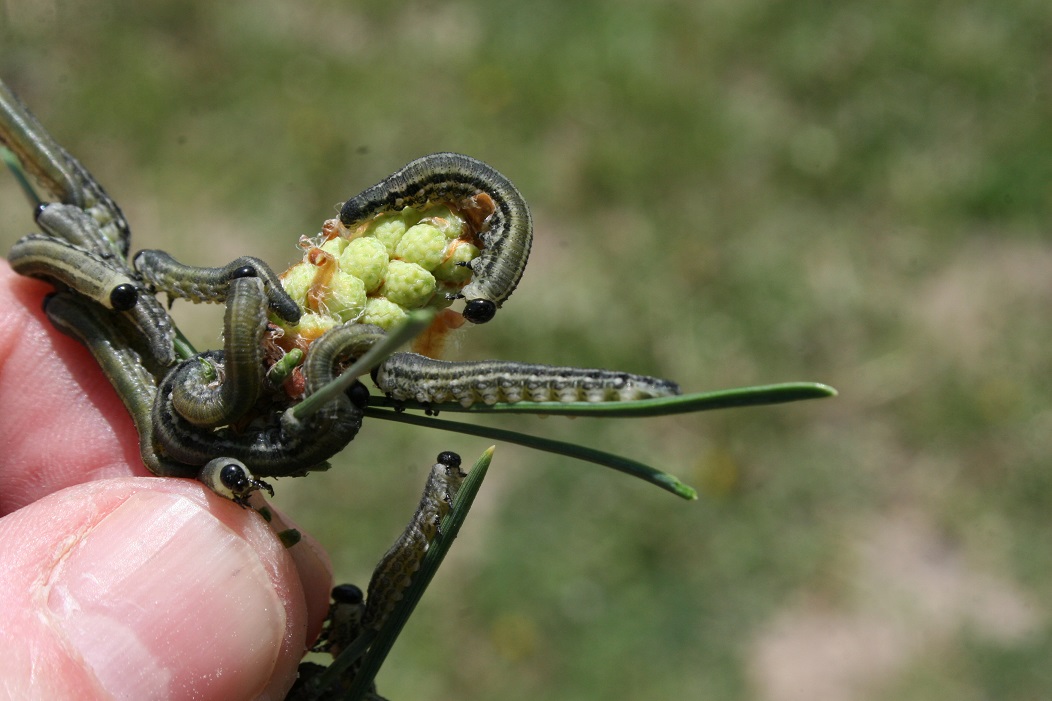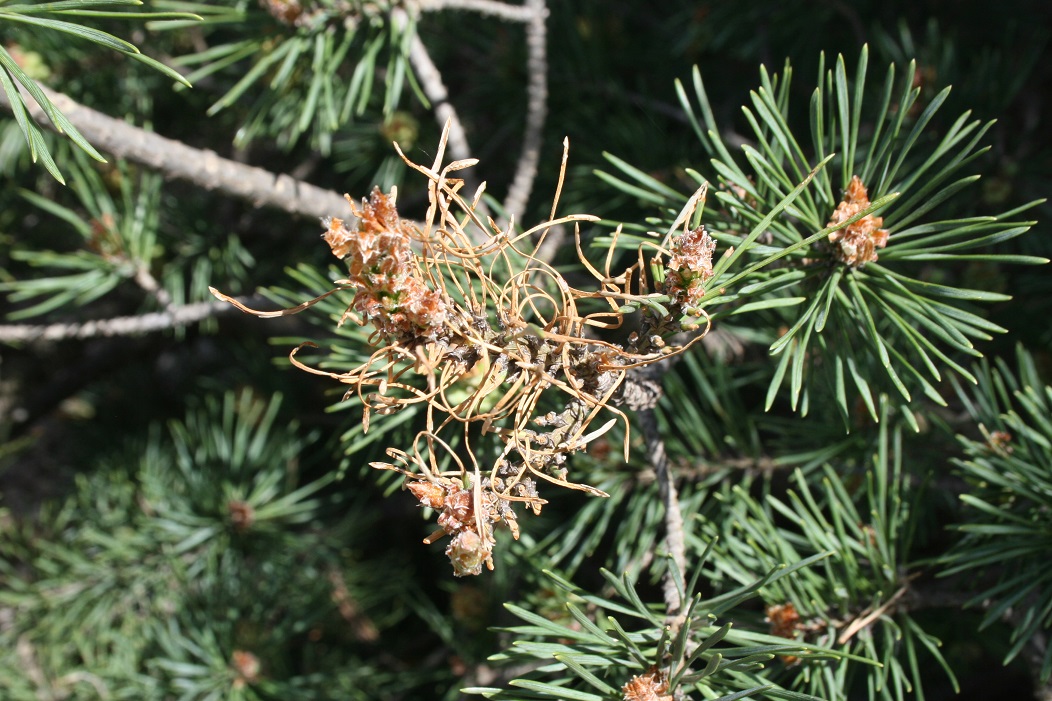–Dr. Raymond Cloyd
Yesterday (April 17, 2017) European pine sawfly, Neodiprion sertifer larvae were detected feeding on my “indicator pine” in Manhattan, KS (I was totally excited!). Young caterpillar-looking larvae are 1/4 inch in length and olive-green in color with a black head (Figures 1). Mature larvae are >1.0 inch long with green stripes. The larvae are gregarious or feed in groups on needles of a variety of pines, especially Scotch, red, and mugo pine. When disturbed, each individual larva will arch their head and abdomen (last segment of an insect body) back, forming a “C-shape” (Figure 2), which is a defensive posture to ward-off predators.
Figure 1. Young European Pine Sawfly Larvae
Eventually, larvae will strip the needles of mature foliage, leaving only the central core, which is white and then turns brown (Figure 3). In general, larvae complete feeding by the time needles emerge from the candelabra. Therefore, those really is only a minor threat of branch or tree death resulting from sawfly larval feeding. However, the loss of second- and third-year needles will be noticeable in landscape trees; thus ruining their aesthetic appearance. In late spring, larvae drop to the ground and pupate in brown, leathery cocoons located at the base of trees. Adults, which are wasp-like, emerge in fall and lay eggs in needles prior to the onset of winter. There is one generation per year in Kansas.
Figure 2. European Sawfly Larvae In A Defensive Posture (Arching Head And Abdomen Back)
Sawfly larvae look-like caterpillars; but, they are not caterpillars (Order: Lepidoptera). Sawflies are related to ants, bees, and wasps (Order: Hymenoptera). The primary way to distinguish a sawfly larva from a caterpillar is by the following: 1) sawfly larva have prolegs (fleshy abdominal legs) on every abdominal segment whereas caterpillars are missing prolegs on the abdomen and 2) caterpillar larva have hairs or crochets on their feet whereas sawfly larva do not have hairs or crochets on their feet.
Figure 3. Feeding Damage To Pine Caused By European Pine Sawfly Larvae
Sawfly larvae are not caterpillars, therefore, the bacterial insecticide, Bacillus thuringiensis subsp. kurstaki (sold as Dipel) will not directly kill sawfly larvae. Dealing with sawfly larvae involves hand-picking (you can wear gloves if you wish) or dislodging larvae from plants by means of a forceful water spray. If necessary, there are a number of insecticides that may be applied to suppress European pine sawfly populations including: acephate (Orthene), azadirachtin, carbaryl (Sevin), spinosad (Captain Jack’s DeadBug Brew and Conserve), and any pyrethroid insecticide (e.g., bifenthrin, cyfluthrin, and lambda-cyhalothrin). Be sure to read the insecticide label to make sure that sawflies are listed. For more information regarding European pine sawfly management contact your county or state extension specialist.


